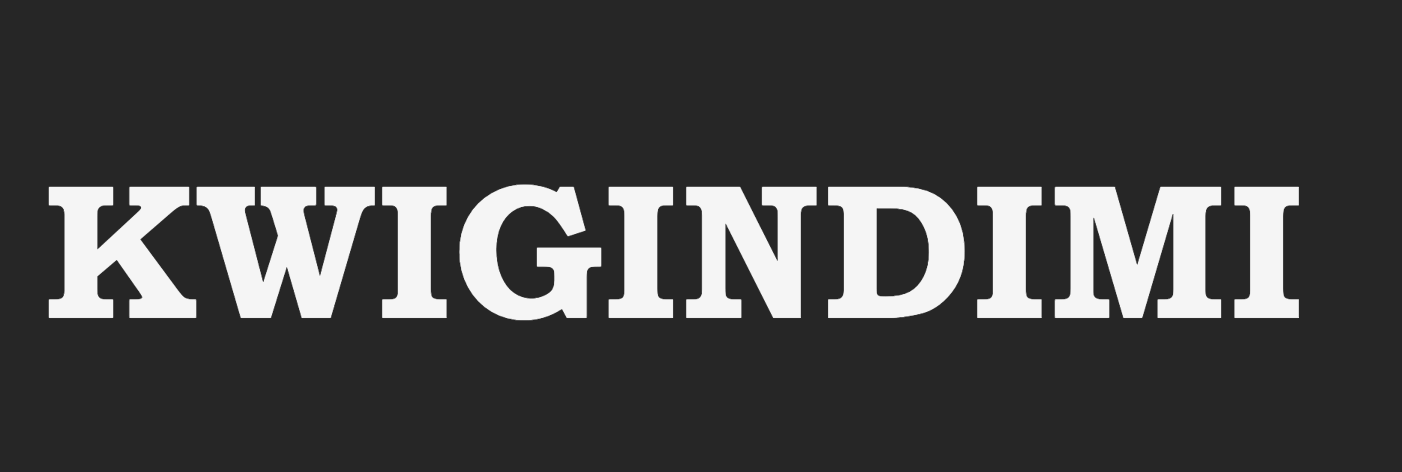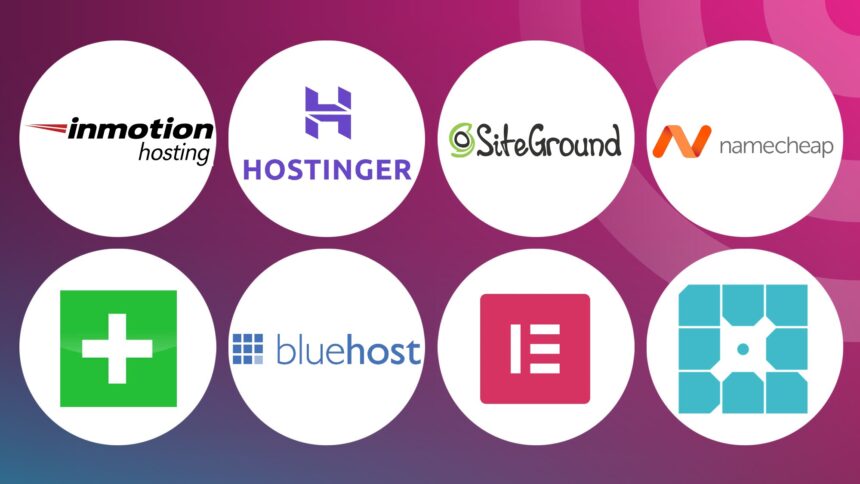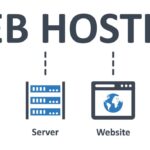Introduction
In an era where online commerce dictates the pace and scale of business growth, selecting the right hosting server for your ecommerce platform is more critical than ever. As we move through 2025, businesses are facing heightened customer expectations around site speed, security, and reliability. A delay of mere milliseconds in page load times can translate into lost sales, diminished brand loyalty, and adverse effects on search engine rankings.
Moreover, advancements in mobile shopping, AI-driven personalization, and global payment gateways have raised the stakes for hosting environments, calling for robust infrastructures capable of meeting these evolving demands.
Choosing a hosting solution is not just a technical decision; it shapes the customer experience, influences search engine visibility, and directly affects profitability. For entrepreneurs and IT managers alike, understanding the nuances of server performance, data security, scalability, and support services is foundational to unlocking ecommerce success. This comprehensive guide delves into every aspect of hosting that matters to your online store in 2025, equipping you with the knowledge to make an informed choice one that balances performance, security, cost, and future growth.
Understanding Ecommerce Hosting Requirements
Performance and Speed
When customers click on a product link, they expect near-instantaneous responses. Page loading delays of even half a second can increase bounce rates and decrease conversion rates. Ecommerce sites rely heavily on dynamic content product catalogs, shopping cart updates, and user accounts all of which require swift server-side processing.
A hosting server with high CPU performance, ample RAM, and optimized software stacks ensures that database queries and application logic execute without lag. In 2025, with richer multimedia content and interactive features becoming standard, performance optimization must be at the core of your hosting decision.
Reliability and Uptime
Downtime is revenue loss. Even a single hour of unplanned outage during peak shopping periods, such as holiday seasons or promotional events, can lead to substantial financial setbacks and reputation damage. Leading hosting providers now offer service level agreements (SLAs) guaranteeing uptime percentages as high as 99.99 percent. This translates to less than an hour of downtime annually. For ecommerce operations, redundancy through multiple data centers, failover protocols, and proactive monitoring are indispensable to maintain uninterrupted service.
Security Considerations
Cyber threats have grown more sophisticated and frequent. Data breaches that expose customer information such as payment card details and personal identifierscan erode customer trust and attract punitive fines under regulations like GDPR and PCI DSS. A hosting solution tailored for ecommerce must include robust security measures: built-in firewalls, intrusion detection systems, DDoS mitigation, and automated patch management. SSL/TLS encryption is non-negotiable to protect transactions, while regular vulnerability assessments and compliance certifications provide assurance that the environment meets industry standards.
Scalability and Growth
The ability to scale resources in response to traffic surges defines the resilience of an ecommerce platform. Seasonal spikes, flash sales, and viral marketing campaigns can push visitor counts and transaction volumes to new heights. Traditional fixed-capacity servers can buckle under such loads, resulting in performance degradation.
Modern hosting architectures leverage cloud elasticity, auto-scaling groups, and container orchestration to dynamically allocate CPU, memory, and storage. When your server environment adjusts in real time to demand, you maintain optimal performance while controlling costs during off-peak periods.
Cost and Budget
Budget constraints are a reality for businesses of all sizes. While high-end dedicated servers and enterprise cloud solutions offer unparalleled performance and features, they come with premium price tags. Conversely, ultra-cheap shared hosting plans often fall short on critical ecommerce requirements.
Striking the right balance involves understanding total cost of ownership (TCO), which includes not only monthly hosting fees but also expenses related to traffic overages, SSL certificates, managed services, and support add-ons. In 2025, transparent pricing models and pay-as-you-go billing have become commonplace, enabling businesses to align hosting expenditures with actual resource consumption.
Support and Maintenance
Technical issues are inevitable, and when they arise, timely assistance can mean the difference between a minor hiccup and extended downtime. Ecommerce hosting demands 24/7 technical support with personnel experienced in server administration, database management, and security response.
In addition to reactive troubleshooting, hosting providers should offer proactive maintenance: automated backups, system health scans, and software updates. For teams without in-house DevOps expertise, managed hosting services relieve the burden by handling routine tasks and ensuring best practices are consistently applied.
Specialized Ecommerce Features
Beyond the basics, ecommerce platforms benefit from hosting environments that integrate seamlessly with popular shopping carts, payment gateways, and CDNs. One-click installations for platforms like WooCommerce, Magento, and Shopify enable rapid deployment, while built-in caching mechanisms and image optimization tools accelerate page loads.
Features such as staging environments allow safe testing of new plugins, themes, or custom code before pushing changes to production. As headless commerce and API-driven architectures gain traction in 2025, hosting solutions that accommodate microservices and serverless functions afford businesses greater flexibility to innovate.
Types of Hosting Options
Shared Hosting
Shared hosting is the most economical option, where multiple websites reside on a single server and share its resources. For fledgling ecommerce ventures with minimal traffic and simple storefronts, shared hosting can suffice initially. Providers often include user-friendly control panels, email hosting, and basic security tools.
However, resource contention among tenants leads to unpredictable performance, making shared hosting ill-suited for stores expecting rapid growth or handling sensitive transactions. In 2025, shared hosting remains a viable entry point, but businesses should plan for migration to more robust environments as they scale.
Virtual Private Servers (VPS)
VPS hosting partitions a physical server into multiple isolated virtual servers, each with dedicated CPU, memory, and storage allocations. This model transcends the limitations of shared hosting, offering improved performance and security while remaining cost-effective. With root access, businesses can customize server configurations, install specialized software, and optimize settings for their ecommerce platform.
Modern VPS solutions incorporate SSD storage, full virtualization, and network-level redundancy. For growing online stores, VPS hosting strikes a compelling balance between control, reliability, and affordability.
Dedicated Servers
Dedicated servers provide exclusive access to an entire physical machine, ensuring that all hardware resources are reserved for your ecommerce site. This option delivers maximum performance, security, and configurability, making it ideal for high-traffic stores with complex application requirements.
Dedicated environments allow businesses to fine-tune server settings, deploy specialized caching layers, and implement custom security appliances. In 2025, leading providers offer hybrid dedicated servers that combine on-premises hardware with cloud-like features such as API-driven management and elastic resource scaling through burstable instances.
Cloud Hosting
Cloud hosting leverages distributed infrastructures across multiple servers and data centers, providing unparalleled scalability, resilience, and global reach. With pay-as-you-go models, companies can dynamically provision compute, storage, and networking resources to match traffic patterns. Cloud platforms such as Amazon Web Services, Google Cloud Platform, and Microsoft Azure dominate the market, offering extensive service catalogs that include container orchestration, machine learning, and serverless functions. For ecommerce entrepreneurs, cloud hosting enables rapid expansion into new regions, robust disaster recovery strategies, and integration with advanced analytics tools.
Managed Ecommerce Hosting
Managed ecommerce hosting abstracts the complexities of server administration, security, and performance optimization, allowing businesses to focus on marketing, product development, and customer engagement. Providers specializing in ecommerce offer preconfigured environments optimized for platforms like Shopify, BigCommerce, and Magento.
Services typically include automatic updates, daily backups, dedicated support, and performance tuning. In 2025, managed hosting has evolved to incorporate AI-driven monitoring, predictive scaling, and built-in fraud detection, empowering merchants to launch and maintain high-performing storefronts with minimal technical overhead.
Key Features to Look For in Ecommerce Hosting
SSD Storage and CDN Integration
Solid-state drives (SSDs) have become the standard for hosting environments due to their superior read/write speeds and durability compared to traditional hard disk drives. Ecommerce sites with extensive product catalogs, high-resolution images, and video content benefit significantly from SSD storage. To further accelerate content delivery, integration with a content delivery network (CDN) distributes assets across edge servers worldwide. This reduces latency for end users, boosts page load times, and alleviates origin server load.
SSL Certificates and PCI Compliance
Securing customer payment information is a legal and ethical imperative. SSL/TLS certificates encrypt data in transit, ensuring that credit card numbers, personal details, and login credentials cannot be intercepted by malicious actors. Beyond SSL, hosting environments must facilitate PCI DSS compliance by implementing secure network architectures, access controls, and regular vulnerability scanning. Many providers now include free basic SSL certificates via Let’s Encrypt, while advanced offerings support extended validation (EV) certificates and wildcard coverage for subdomains.
Server Location and Data Center Quality
Latency is influenced not only by server-performance characteristics but also by physical proximity between servers and customers. Hosting providers with multiple data centers enable businesses to choose server locations closest to their primary markets.
In addition to geographic distribution, data center certifications such as Tier III or IV designations, ISO 27001, and SOC 2 compliance signal high standards for uptime, security, and operational procedures. Evaluating data center quality ensures that your ecommerce site rests on an infrastructure designed for reliability and resilience.
Backup and Disaster Recovery
Data loss can arise from hardware failures, software bugs, or cyberattacks. A comprehensive backup strategy is crucial for ecommerce operations, encompassing full-site snapshots, incremental backups, and off-site replication. Disaster recovery plans should define recovery point objectives (RPOs) and recovery time objectives (RTOs) that align with business continuity goals.
Advanced hosting solutions offer automated backup scheduling, one-click restores, and failover mechanisms that redirect traffic to standby environments in case of primary server disruptions.
One-Click Installers and Control Panels
Ease of management accelerates deployment and reduces the learning curve for non-technical users. Hosting providers typically offer control panels such as cPanel, Plesk, or proprietary dashboards that facilitate domain management, email configuration, and application installation.
One-click installers streamline the setup of popular ecommerce platforms, saving time on initial configuration and enabling entrepreneurs to launch storefronts rapidly. In 2025, intuitive UIs augmented with context-sensitive guidance and AI-powered recommendations further simplify administration tasks.
Technical Support and Managed Services
Even with a robust hosting platform, unforeseen issues can emerge. Access to knowledgeable technical support ideally available around the clock via chat, phone, and email is indispensable. Providers that specialize in ecommerce understand the unique demands of online stores and can offer tailored advice on performance tuning, security hardening, and platform updates.
Managed services extend this support by handling routine maintenance, software patches, and proactive performance reviews, freeing internal teams to concentrate on growth-driving activities.
Top Hosting Providers for Ecommerce in 2025
Provider A: SiteGround
SiteGround has earned a reputation for reliable performance, proactive security, and exceptional customer service. Leveraging Google Cloud’s infrastructure, SiteGround offers SSD-based shared, cloud, and dedicated hosting plans. Its proprietary caching system, SuperCacher, accelerates dynamic content, while the free Cloudflare CDN integration further optimizes page load times globally.
SiteGround’s managed offerings for WooCommerce include automatic plugin updates, daily backups, and staging environments, making it a favored choice for small to medium-sized online stores.
Provider B: Bluehost
Bluehost, an Endurance International Group brand, continues to be a go-to provider for WordPress and WooCommerce hosting. With intuitive control panels, one-click installs, and 24/7 support, Bluehost caters to businesses seeking an all-in-one solution. Its eCommerce plan bundles a dedicated IP, free SSL certificate, and marketing credits to jumpstart promotional campaigns. In 2025, Bluehost’s partnerships with marketplace platforms and payment processors streamline the integration of multichannel sales and alternative checkout options.
Provider C: Amazon Web Services (AWS)
As the pioneer of cloud computing, AWS offers unparalleled scalability, geographic coverage, and service diversity. Ecommerce businesses can architect solutions using Amazon EC2 instances, RDS databases, S3 storage, and CloudFront CDN.
AWS’s pay-as-you-go billing model allows fine-grained cost control, while services like AWS Shield and WAF provide advanced DDoS protection and web application security. The complexity of AWS demands skilled DevOps expertise, but for enterprises seeking customized, high-performance infrastructures, AWS remains the gold standard.
Provider D: Google Cloud Platform (GCP)
Google Cloud Platform excels in data analytics, machine learning, and global networking. Ecommerce sites benefit from GCP’s Compute Engine virtual machines, managed Kubernetes Engine for containerized applications, and BigQuery for real-time customer insights. Cloud CDN and Cloud Armor enhance performance and security, respectively. GCP’s AI-driven recommendations for resource optimization and traffic load balancing empower businesses to deliver seamless shopping experiences while controlling operational costs.
Provider E: Alibaba Cloud
For businesses targeting the Asia-Pacific region, Alibaba Cloud offers a competitive edge with data centers strategically located across major markets. Alibaba’s Elastic Compute Service (ECS) provides flexible compute options, while Object Storage Service (OSS) and Content Delivery Network (CDN) ensure rapid delivery of media assets.
In 2025, Alibaba Cloud’s anti-DDoS Pro and Web Application Firewall (WAF) extensions help ecommerce merchants navigate complex security landscapes. Its multilingual support and regional compliance certifications make it a compelling choice for global expansion.
Provider F: Shopify Plus
Shopify Plus is a fully managed ecommerce platform that abstracts hosting entirely, delivering a turnkey solution for high-volume stores. As a Software-as-a-Service (SaaS) offering, Shopify Plus handles infrastructure scaling, security compliance, and performance optimization out of the box.
Merchants gain access to advanced APIs, headless commerce capabilities, and personalized checkout experiences. While direct server control is limited, Shopify Plus’s ecosystem of themes, apps, and integrations accelerates launch timelines and simplifies global operations.
Comparing Hosting Plans and Pricing Strategies
Entry-Level Plans
Entry-level hosting plans typically target startups and small businesses with modest traffic volumes. Shared and starter VPS plans often include limited CPU cores, RAM allocations (1–2 GB), and storage quotas (10–20 GB). Pricing ranges from USD 5 to USD 20 per month.
While cost-effective, these plans may impose usage caps on bandwidth and concurrent connections, necessitating upgrades during promotional campaigns or seasonal surges. Businesses should evaluate baseline performance metrics and consider plans with generous resource buffers to avoid unexpected slowdowns.
Mid-Tier Solutions
Mid-tier hosting encompasses higher-tier VPS offerings, basic cloud instances, and managed plans designed for growing stores. RAM allocations rise to 4–8 GB, CPU vCPUs expand, and SSD storage increases to 50–100 GB. Mid-tier plans often bundle premium features such as dedicated IP addresses, advanced monitoring dashboards, and eCommerce-specific support.
Pricing in this segment generally falls between USD 20 and USD 100 per month. For merchants experiencing steady growth, mid-tier solutions balance affordability with the capabilities needed to sustain reliable performance.
Enterprise-Level Hosting
Enterprise hosting caters to high-traffic ecommerce platforms requiring customized infrastructures, rigorous compliance, and dedicated account management. Configurations may include multiple dedicated servers, high-memory instances, and distributed database clusters. Enterprise plans often incorporate service credits for extra traffic, priority support SLAs, and on-site technical consultations.
Costs vary widely based on specifications but typically start at several hundred dollars per month and can escalate into the thousands. Enterprises must weigh TCO against revenue impact and the strategic importance of flawless customer experiences.
Value-Added Services and Add-Ons
Across hosting tiers, providers offer add-ons that extend functionality: premium SSL certificates, managed database services, advanced security suites, and CDN bandwidth boosts. Marketing credits, email deliverability tools, and SEO audit integrations can enhance promotional efforts and drive traffic. When evaluating hosting plans, businesses should factor in the cost and benefit of these extras, ensuring that bundled services align with their operational priorities and growth strategies.
Migration and Onboarding Best Practices
Preparing Your Ecommerce Platform
Before migrating to a new hosting environment, take inventory of all site components: application files, databases, media assets, and third-party integrations. Audit installed themes, plugins, and custom code to identify versions and dependencies. Clean up obsolete or redundant elements to streamline the migration process and reduce potential compatibility issues on the destination server.
Data Migration Strategies
Data migration involves transferring both static assets (images, downloadable content) and dynamic databases. Incremental synchronization tools, such as rsync for files and replication features for databases, enable near-real-time copying with minimal disruption.
For large datasets, consider staging the initial transfer during off-hours and finalizing synchronization shortly before the cutover window. Always verify data integrity through checksums or automated validation scripts.
Minimizing Downtime
Zero-downtime migrations are achievable through load balancers and DNS management. By deploying the new environment in parallel and configuring load balancing to distribute traffic between old and new servers, you can gradually shift users without interruption.
Once performance and stability are confirmed, fully reassign DNS records to the updated hosting environment. Shortening DNS TTL (time-to-live) values in advance ensures rapid propagation of IP changes.
Testing and Quality Assurance
Post-migration, conduct comprehensive testing: functional verification of checkout flows, performance benchmarking under simulated load, security scanning, and cross-browser compatibility checks. Engage QA teams to navigate the site as end users, placing test orders and reviewing abandoned cart recovery processes. Validate SSL certificates and payment gateway integrations to guarantee seamless transaction processing.
Monitoring and Optimizing Your Hosting Environment
Performance Monitoring Tools
Continuous monitoring is vital to detect anomalies before they impact customers. Application performance monitoring (APM) solutions such as New Relic, Datadog, and Dynatrace provide deep insights into server metrics, database query performance, and front-end load times. Alert thresholds for CPU utilization, memory usage, and response latencies empower teams to address emerging bottlenecks proactively.
Security Audits and Penetration Testing
Routine security assessments uncover vulnerabilities in server configurations, web applications, and third-party components. Penetration testing simulates real-world attacks, revealing weaknesses that automated scanners may miss. Coupled with regular patch management and dependency updates, these practices fortify the hosting environment against evolving threats.
Regular Updates and Patching
Operating system kernels, web server software, database engines, and application frameworks all receive periodic security and performance patches. Automating patch deployment through configuration management tools such as Ansible, Puppet, or Chef ensures that critical updates are applied promptly and consistently across server fleets. For mission-critical environments, patching windows should be coordinated with stakeholders and preceded by backup snapshots.
Scaling Resources Dynamically
Auto-scaling groups in cloud platforms can adjust compute capacity based on predefined metrics such as CPU load or request rates ensuring that resource availability closely follows traffic patterns. Container orchestration tools like Kubernetes further facilitate dynamic scaling by deploying additional pods in response to increased demand. By instrumenting your ecommerce application with horizontal and vertical scaling strategies, you maintain performance without overprovisioning resources.
Case Studies: Ecommerce Success Stories Powered by the Right Hosting
Case Study 1: Artisan Marketplace
An online marketplace for handcrafted goods experienced rapid growth after securing a feature in a prominent lifestyle publication. The sudden influx of traffic overwhelmed its shared hosting environment, causing frequent timeouts and cart failures.
By migrating to a managed cloud VPS with SSD storage and CDN integration, the marketplace achieved sub-300 millisecond page load times. Enhanced caching and database indexing further improved checkout reliability, resulting in a 25 percent increase in completed transactions and a 15 percent boost in average order value.
Case Study 2: Global Fashion Retailer
A mid-sized fashion brand sought to expand into new geographic markets. Its previous hosting provider lacked data centers outside North America, resulting in laggy experiences for European and Asian customers. Transitioning to a multi-region cloud hosting architecture with edge caching and regionalized load balancers reduced latency by up to 70 percent in target markets. Coupled with localized content delivery and currency support, the retailer saw a 30 percent uplift in international sales within three months of the migration.
Case Study 3: Subscription Box Startup
A subscription box company offering curated monthly products faced scalability challenges during seasonal promotions. Traffic spikes during holiday campaigns led to server crashes and lost revenue opportunities. Adopting an auto-scaling container-based infrastructure on a leading cloud platform allowed the startup to handle 10× baseline traffic without manual intervention. Real-time performance dashboards and predictive scaling algorithms optimized resource utilization, slashing hosting costs by 40 percent while maintaining flawless customer experiences.
Frequently Asked Questions
What distinguishes shared hosting from VPS in the context of ecommerce?
Shared hosting places multiple sites on one server, sharing CPU, memory, and disk I/O, which can lead to unpredictable performance. VPS hosting allocates dedicated virtual resources to each tenant, ensuring more consistent speed and security—critical for transactional workloads and customer confidence.
How do I ensure my hosting is PCI-compliant?
PCI compliance requires encryption of cardholder data, network segmentation, strong access controls, and regular vulnerability scanning. Choose hosting providers that offer managed PCI environments or guide you through compliance certification processes, including SAQ (Self-Assessment Questionnaire) completion and third-party audits.
Is cloud hosting more expensive than traditional dedicated servers?
Cloud hosting can be more cost-effective when usage patterns are variable, as you pay only for resources consumed. Dedicated servers involve fixed monthly fees regardless of utilization. For predictable, high-utilization workloads, dedicated servers might offer better economics; for spiky traffic, cloud elasticity often yields savings.
Can I migrate my existing ecommerce platform without losing SEO rankings?
Zero-downtime migrations and careful preservation of URL structures, metadata, and canonical tags minimize SEO impact. Implement 301 redirects for any changed URLs, monitor Google Search Console for crawl errors, and update sitemap files post-migration to guide search engines to the new environment.
What level of technical expertise do I need to manage an AWS-based ecommerce site?
AWS offers extensive capabilities but demands proficiency in areas such as network architecture, IAM (Identity and Access Management), and infrastructure as code. Smaller teams without DevOps resources may prefer managed cloud hosting or platform-specific managed services that abstract the infrastructure complexity.
Conclusion
Selecting the right hosting server for your ecommerce store in 2025 is a foundational decision that influences every facet of your online business from page load times and security posture to customer satisfaction and revenue growth. By evaluating your performance requirements, security needs, scalability objectives, and budget constraints, you can choose a hosting solution be it shared, VPS, dedicated, cloud, or managed ecommerce hosting that aligns with your strategic goals.
As demonstrated by leading providers and real-world case studies, the optimal hosting environment not only delivers reliable, lightning-fast experiences but also empowers you to innovate, expand globally, and capitalize on emerging ecommerce trends. Invest time in planning your hosting strategy today to build a resilient, future-proof foundation for sustained ecommerce success.




